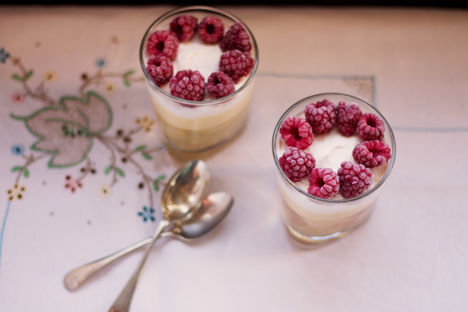
Scottish hospitality and celebrations
Graeme Taylor talks us through Scottish food and hospitality, with suggestions for a perfect St. Andrew's Day feast.
Scottish hospitality and celebrations
Graeme Taylor talks us through Scottish food and hospitality, with suggestions for a perfect St. Andrew's Day feast.
For me Scottish hospitality has always meant a desire to feed and water guests. In days gone by this extended as far as providing shelter for those who appeared on your doorstep, often cold, hungry, and weary. However, in my lifetime it has always meant a time of celebration. Whether it was a run of the mill Saturday night with cousins from Glasgow, the annual day out at Melrose Sevens armed with rucksacks packed with sandwiches, pies, beer, and whisky, or a more formal holiday celebration at Christmas I’ve always enjoyed that feeling of being among people who are sharing food, drink, warmth and hospitality.
The Scottish calendar increasingly has three times when that celebration spills beyond the nation’s borders, where the rest of the world comes to visit and celebrate, or we Scots fill foreign lands with kilts, pipes and the aromas of meat and drink of the homeland.
New Years Eve, or ‘Hogmanay’ to give it its proper name is synonymous with tradition in Scotland. As a child it meant ‘Yu-lade’ fruity or ginger wine, shortbread and Madeira cake. We would see in the bells at home and then the celebration would begin. First footed with a lump of coal despite the absence of a coal fire, cracking open of the Ne’erday bottle, and opening the doors to hear the Clyde funnels as the steady stream of visitors came to wish you well. Ne’erday would follow with trips to both Grans for more handshakes and drinks, before settling down to steak pie with mashed tatties, turnip, steeped peas and butter beans, followed by Aunt Betty’s legendary pavlova. Celebrating in Scotland inevitably means feeding and being fed and very little of these childhood traditions have changed for me thirty years on, except for one thing. Stovies. I always marvelled at tales of stovies and drams being fed to guests on Hogmanay, and it’s a tradition I like to keep, there’s no meal quite as warming as the last of the old year or first of the new.
The second main feasting celebration is Burns Night. Over two hundred years has passed since friends of Robert Burns marked his death with a supper in celebration of his life. And each year the world o’er, friends and family still sit down to share his poems over a meal, traditionally consisting of cock-a-leekie soup, haggis, and cranachan. Burns night was my first ever introduction to whisky as the lady beside me exuberantly introduced me to my ‘gravy’. It didn’t add to the flavour of this eleven-year-old’s haggis and my rather aghast mother quickly swapped the plates. I’ve never poured whisky over my haggis to this day; I far prefer the effect of washing the much vaunted pudding down with it rather than sharing the plate.
The last of the three is less traditionally celebrated in my experience, certainly not on a par with the way the Irish celebrate St. Patrick’s Day, but it is beginning to come into the consciousness of Scots more now. On the last day of November, on the cusp of autumn departing completely for winter, with crisp, cold frosty mornings, early evening darkness and the last of the summer leaves still clinging to the trees, comes St. Andrew’s Day. The story goes that the relics of Andrew the Apostle were brought from Constantinople to what is now St. Andrews in the Kingdom of Fife and presented to a Pictish king, Angus. Angus vowed that if granted victory over the Angles in battle he would appoint Saint Andrew as the Patron Saint of Scotland, and as clouds formed a white saltire against the blue sky over the battlefield the outnumbered army of Scots and Picts was victorious and Angus kept his word.
In these more peaceful times it is an opportunity to come together with family and friends and celebrate not only Scotland’s Patron Saint but also her natural larder. There is no real set menu for St. Andrews’ Day, so you can use it is an opportunity to be inspired by the flavours available to you as I have here, or go for something a little more traditional. The choice is yours, although as the late night becomes early morning a big bowl of stovies would never go amiss.
My St. Andrew’s Day menu
Try these warming recipes this St. Andrew's Day for a real Scottish feast.


